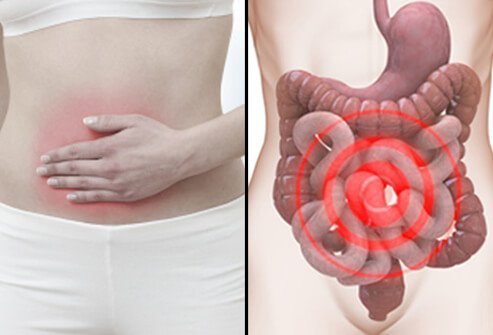Infertility on Women: Symptom, Causes, and Risk
Author: Giselle Robel
Giselle Robel
Category: Health
Tags: infertility, health, pregnant

What is infertility?
Infertility it is being unable to get pregnant despite having frequent, unprotected sex.
And also, Infertility is a condition where you cannot get pregnant after one year of trying to conceive. Whereas, the risk of infertility increases as you age.
When the woman is older than 35, the infertility rate is higher. Especially, in women over 40. Infertility does not include miscarrying or being unable to carry a baby to childbirth.
Causes of female infertility
In order to get pregnant, all of the steps during ovulation and fertilization need to happen correctly.

Infertility causes can affect one or both partners. And sometimes, no cause can be found.
Causes of female infertility may include:
- Ovulation disorders, which affect the release of eggs from the ovaries. Most likely it these include hormonal disorders such as polycystic ovary syndrome. Hyperprolactinemia, is a condition in which you have too much prolactin the hormone that stimulates breast milk production also may interfere with ovulation. Either too much thyroid hormone (hyperthyroidism) or too little (hypothyroidism) can affect the menstrual cycle or cause infertility. Other underlying causes may include too much exercise, eating disorders or tumors.
- Uterine or cervical abnormalities, including abnormalities with the cervix, polyps in the uterus or the shape of the uterus. Noncancerous (benign) tumors in the uterine wall (uterine fibroids) may cause infertility by blocking the Fallopian tubes or stopping a fertilized egg from implanting in the uterus.
Additional causes
- Fallopian tube damage or blockage, often caused by inflammation of the Fallopian tube (salpingitis). Which, resulting from having pelvic inflammatory disease, and mostly caused by a sexually transmitted infection, endometriosis or adhesions.
- Endometriosis, which occurs when endometrial tissue grows outside of the uterus, may affect the function of the ovaries, uterus and Fallopian tubes.
- Primary ovarian insufficiency (early menopause), when the ovaries stop working and menstruation ends before age 40. Although the cause is often unknown, certain factors are associated with early menopause, including immune system diseases, certain genetic conditions such as Turner syndrome or carriers of Fragile X syndrome, and radiation or chemotherapy treatment.
- Pelvic adhesions, bands of scar tissue that bind organs that can form after pelvic infection, appendicitis, endometriosis or abdominal or pelvic surgery.
- Cancer and its treatment. Certain cancers particularly reproductive cancers often impair female fertility. Both radiation and chemotherapy may affect fertility.
What are the types of infertility?
Types of infertility include:
- Primary: A woman who was never pregnant and who can't conceive after one year of not using birth control.
- Secondary: Secondary infertility occurs when a woman can't get pregnant again after having at least one successful pregnancy.
When should you seek help for infertility?
Women under the age of 35 who aren't pregnant after one year of trying should, seek help sooner (after six months of trying). A woman's chances of getting pregnant decrease with age. A 30-year-old woman is half as fertile as a 20-year-old woman.
If you have the risk factor that might affect your fertility. Regardless of gender, you should seek help early to avoid being infertile.
What are risk factors for female infertility?

These factors can contribute to female infertility:
- Abnormal menstruation.
- Blocked Fallopian tubes.
- Celiac disease.
- Kidney disease.
- Past ectopic (tubal) pregnancy.
- Pelvic inflammatory disease.
- Pituitary gland disorders, such as Cushing's syndrome.
- Polycystic ovary syndrome (PCOS), ovarian cysts and primary ovarian insufficiency.
- Sickle cell anemia.
- Uterine problems, including endometriosis, uterine fibroids and uterine polyps.
- Thyroid disease.
How is female infertility diagnosed?
You can record signs of your ovulation, such as basal body temperature and cervical mucus. You may also use a home ovulation kit.
These tests can also help diagnose or rule out a female fertility problem:
- Pelvic exam: Your provider will perform a pelvic exam, including a Pap smear to check for structural problems or signs of disease.
- Blood test: A blood test can check hormone levels, including thyroid hormones.
- Transvaginal ultrasound: Your doctor inserts an ultrasound wand into the vagina to look for problems with the reproductive system.
- Hysteroscopy: Your provider inserts a thin, lighted tube (hysteroscope) into the vagina to examine the uterus.
- Saline sonohysterogram (SIS): Your provider fills the uterus with saline (sterilized salt water) and conducts a transvaginal ultrasound. A full uterus makes it easier to see inside the uterus.
- Hysterosalpingogram (HSG): X-rays capture an injectable dye as it travels through the Fallopian tubes. This test looks for blockages.
- Laparoscopy: Your provider inserts a laparoscope ( a thin tube with a camera) into a small abdominal incision. Female pelvic laparoscopy helps identify problems like endometriosis, uterine fibroids and scar tissue.
How is female infertility treated?
Treatments for infertility include:
- Medications: There are fertility drugs that can change hormone levels to stimulate ovulation.
- Surgery: By undergoing surgery, it can open blocked Fallopian tubes and remove uterine fibroids and polyps. Surgical treatment of endometriosis doubles a woman's chance of pregnancy.
Prevention
There are types of infertility that can’t be prevented,but there are types that can. However early learning that you have problem is still the best prevention.
Couples
Having regular intercourse several times during the time of ovulation has the highest chances of being pregnant. Intercourse beginning at least five days before and until a day after ovulation will improves your rate of getting pregnant. Ovulation usually occurs in the middle of the cycle halfway between menstrual periods for most women with menstrual cycles about 28 days apart.
Women
For women, a number of ways may increase the chances of becoming pregnant:
- Quit smoking. Tobacco has many negative effects on fertility. Not to mention your general health and the health of a fetus. So, if you smoke and are considering pregnancy, quit now.
- Avoid alcohol and street drugs. Same with smoking, these substances may decrease your ability to conceive and have a healthy pregnancy. Don’t drink alcohol or use recreational drugs, such as marijuana, if you’re trying to get pregnant.
- Limit caffeine. Women trying to get pregnant may want to limit caffeine intake.
- Exercise moderately. Regular exercise is important, exercising intensely is not advisable, it can your periods, infrequent or absent can affect fertility.
- Avoid weight extremes. Being overweight or underweight can affect your hormone production and cause infertility.













